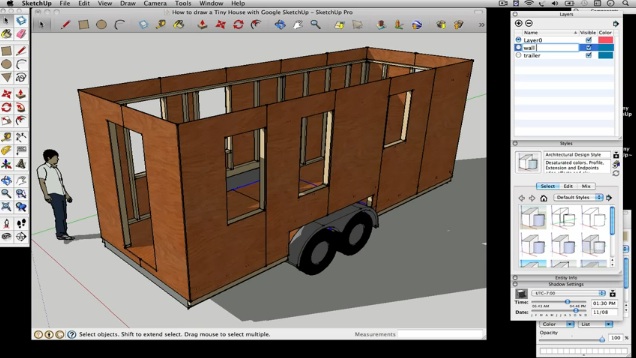How To Get Internet For RV Guide
What You Should Know About Getting An Internet For Your RV
There are many different solutions for Internet access for those on the road. With many having the opportunity to work remotely and virtually since the last few years, one can work literally from anywhere. This is a great match for full-time RVers or anyone who loves to travel. However, remote jobs depend on a reliable Internet access:
Whether it’s to check emails, attend a Zoom conference call or to log into the company work server, none of these can happen without a solid and fast Internet connection.

Contents
- 1 What You Should Know About Getting An Internet For Your RV
- 2 Can You Get Good Internet In An RV?
- 3 What Are Your RV Internet Options
- 4 How Do You Know What RV Internet Is Best For You?
- 5 How Much Does It Cost To Get Internet For Your RV?
- 6 How Do You Get High-Speed Internet While Traveling In An RV?
- 7 FAQs
Before we dive into all the details, it is important to be familiar with all the options and to understand the terminology of each feature and option so that you can make an informed decision that works well and meets your Internet needs.
Bandwidth: Bandwidth specifically refers to the capacity at which a network can transmit data. For example, if the bandwidth of a network is 40 Mbps, it implies that the network cannot transmit data faster than 40 Mbps in any given case. (Source: www.solarwinds.com.)
Hotspot: A hotspot is a physical location where people can access the Internet, typically using Wi-Fi, via a wireless local area network (WLAN) with a router connected to an Internet service provider. (Source: www.intel.com.)
Router: A router is a physical or virtual appliance that passes information between two or more packet-switched computer networks. A router inspects a given data packet’s destination Internet Protocol address (IP address), calculates the best way for it to reach its destination and then forwards it accordingly. (Source: www.techtarget.com.)
Tethering: Tethering is the practice of using a mobile device (such as a smartphone) as a modem to connect another device, such as a laptop or another mobile phone to the Internet. To do so, the phone must have mobile data enabled. Tethering is one method of creating a mobile hotspot (an ad hoc wireless access point). (Source: www.techtarget.com).)
Mbps: Broadband speeds are measured in ‘megabits per second’, often shortened to Mb Mbits p/s or Mbps. Bits are tiny units of data, with a megabit representing a million of them. The higher the number of Mbps (megabits per second) you have, the speedier your online activity should be. (Source: www.dorsetcouncil.gov.uk.)
VPN: A virtual private network, or VPN, is an encrypted connection over the Internet from a device to a network. The encrypted connection helps ensure that sensitive data is safely transmitted. It prevents unauthorized people from eavesdropping on the traffic and allows the user to conduct work remotely. (Source: www.cisco.com.)
Can You Get Good Internet In An RV?
In the last few years, the society has been moving toward more and more internet presence, including social media, remote work and schooling, online shopping etc. Most of our everyday life is not only affected by online activity, but more and more dependent on reliable internet access.
One can do online banking, pay bills, get mail, stay connected with loved ones, run a business, read books or watch videos and movies online. In fact, without internet access, many can even feel somewhat disconnected from their communities when traveling.
Having fast and reliable internet allows a person to do everyday things from wherever they are at the moment without being “tied” to a specific location: whether it is to check and answer email, attend a college lecture, join a business meeting or conduct business-with reliable internet, you have the freedom to be wherever you desire to be and not miss a beat.
Challenges Of Getting Internet For Your RV
The goal of RVing is to travel, and at times, to stay at remote places “off-grid”. By definition, there is no infrastructure that allows one to connect to the Internet. Many rural places in the US are still without high-speed internet access; some have outdated infrastructure, some have no access at all (sometimes by choice).
When traveling to remote areas, one needs to be aware of the reality of remoteness; when internet access is critical for work or communication with family and friends, one should research the coverage in the area (including the closest town/access area).
Some applications, such as conference calls or streaming might require high-speed internet access; areas with dial-up internet access limit the use of such applications.
What Are Your RV Internet Options
Below are all available RV internet options, along with their best application, as well as the list of their pro’s and con’s.
Cellular Internet
Features:
With this option, your phone becomes the source of your internet access. You can pretty much do anything on your phone, from video chats to emails to bill pay to online banking. In addition to doing things on your phone, you can designate your phone to be a hotspot for your other devices, such as your laptop or TV for streaming.
Some companies offer WiFi pucks that use the closest cellular tower regardless of cellular carrier (e.g. ATT, Verizon, Sprint)-they have contracts with these carriers and offer more coverage because they can “switch” to any tower in the area regardless of brand.
The amount of data needed varies greatly on application and usage: do you work remotely? Are there students who attend online school? Do you stream a lot of videos or do a lot of online gaming? Do you need tele-conferencing capabilities?
Best for:
Most flexible and customizable option with highest odds for good-quality data (depending on carrier)
Pros:
- Mostly reliable
- You are in control of data use/package/cost and communication with company if there are issues
Cons:
- Internet quality depends on carrier coverage in the area
- Can be expensive
- Might require a contract
- Depends on phone functionality (replacement due to loss and damage can be pricey)
- How much data do you need when traveling in an RV?
- How do you make a hotspot in your RV?
Satellite Internet
Features:
This internet option requires a contract and hardware equipment to carry with you (antenna, receiver etc.).
Best for:
Remote areas, TV, light internet use
Pros:
- Fairly reliable
- Once set up, easy setup at each site
Cons:
- Low intro rate that doubles after a period of time
- Expensive and bulky hardware requirements
- Install fees
- Often requires a contract
- Quality depends on weather conditions
DSL or Cable
Features:
This internet access requires a plug-in connection at site. Because of that, this option only works at places that have DSL or cable infrastructure in place and offer those hookups to their patrons. Some RV parks offer cable and have a connector at the pedestal. This requires a connecting cable and RV compatibility to connect to the cable outlet.
Best for:
Checking email, Office application, online banking, watching cable TV
Pros:
- Fairly reliable
Cons:
- Slow (limited application use)
- Needs to have hookups and cable to connect
- Access in area depends on availability (company must lay fiber optics cable in that area)
- While “free”/included in RV park stay, this can be a bit pricey for the person paying the bill
Smart TV Wi-Fi
Features:
This option uses the Smart TV similarly to one’s cell phone hotspot.
“A smart TV uses your home network to provide streaming video and services on your TV, and will use either wired Ethernet or built-in Wi-Fi to stay connected. Most current TVs support 802.11ac Wi-Fi, but watch for older models, which may still use the older 802.11n standard.” (Source: www.tomsguide.com)
Best for:
Stationary RVers who watch a lot of TV
Pros:
- Reliable streaming
Cons:
- You still need an internet provider
- Dependent of Smart TV access and functionality

Public Wi-Fi
Features:
Public WiFi used to be the main (and only) option for travelers who had no access to the internet. Many cafes, public libraries or fast food places offer free internet access. Many RV parks also offer free public WiFi to their patrons. Often, you do need a password to access it.
Best for:
Checking emails, short work sessions
Pros:
- Free
- Easy access
- Easy to find in big cities
Cons:
- Not secure
- Sometimes, patronage highly encouraged (i.e. you can’t sit at McDonalds for hours without purchasing food there)
- Slow
How Do You Know What RV Internet Is Best For You?
If you need unlimited fast internet in your RV, you will have to be willing to pay for it. For example, Starlink seems like the ultimate solution for RVers, but there is still a waiting list and the price is fairly steep.
The reasonable mid-range solution is to have a smartphone or a Jetpack and purchase Hotspot data packets: some carriers like Cricket (that uses ATT towers) offer 15GB for $10, which you can purchase and add on as you go.
If speed is not the primary driver, but budget is a concern, the cheapest way to go is to have a cell phone plan with unlimited data: many carriers offer plans as cheap as $50/month for unlimited data, talk and text. There are other (month-to-month) plans, as well.
How Much Does It Cost To Get Internet For Your RV?
Below is a comparison of different options for Internet, along with price ranges (remember, the prices vary greatly based on location and availability):
| Internet option | Startup cost (phone, hardware etc.) | Monthly cost (price varies based on plan/data size) |
| Cell phone plan | $300-1,500 | $30-150 |
| Satellite | $150-399 | $45-300 |
| Third-party cell phone puck | $99 | $65-150 |
| Starlink | $599-2,500 | $110-500 |
| DSL/Cable | $99-200 | $30-130 |
How Do You Get High-Speed Internet While Traveling In An RV?
Below are the average speeds per internet access choice:
| Internet option | Internet speed (average) |
| Cell phone | 20-30Mbps average |
| Satellite | 25-100Mbps download, 3Mbps upload |
| DSL | 5 Mbps–100 Mbps |
| Starlink | 50-500Mbps download, 10-40Mbps upload |
Some ways to increase the internet speed are:
- Update your security to cut off bandwidth leeches
- Optimize your router settings
- Choose a new WiFi channel
- Purchase a newer, high-end router
- Reset your router
- Angle one WiFi antenna up and one to the side
- Check out antenna updates and omnidirectional antennas
- Move your wireless router to an elevated, clear spot
- Configure or purchase a WiFi repeater
- Add an internet extender or booster
- Perform a speed test
(Source: www.allconnect.com)
For the RV specifically, here are some things to try:
- Get close to the source
- Obtain line of sight (LOS)
- Go outside the RV
- Use a celullar hotspot for WiFi
- Use a long-range WiFi kit
(Source: simplewifi.com)
FAQs
How do RV parks get internet?
This depends on location: some have satellite, some have cable, with WiFi boosters throughout the park. Many do not carry enough bandwidth to allow for streaming service, or offer individual packages for purchase instead. Some offer WiFi in designated areas, such as a clubhouse or laundromat.
What do full-time RVers do for Internet access?
There are basically three main ways for full-time RVers to get Internet access: Using surrounding Wi-Fi connections (such as RV parks or cafes), investing in a cellular data plan and using hotspots, or putting together a satellite setup (including Starlink).
Can you put a Wi-Fi router in an RV?
Yes, you can use a router in your RV WiFi setup as well. WiFi repeaters, for example, use an antenna on the roof as well as a router inside the rig that broadcasts your RV WiFi connection. (Source: togorv.com.)
Can Starlink be used in an RV?
Yes, Starlink has become another viable option for Internet access in the remotest of places. There is a waitlist to receive the equipment based on location, but many RVers are starting to receive their Starlink access.

